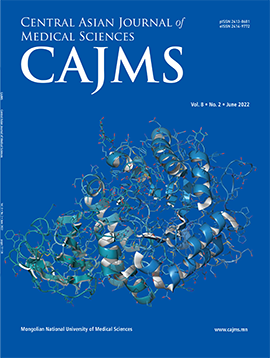Results of the Study for the Antihypertensive Effect in the Panzeria Alaschanica Kupr Plant
DOI:
https://doi.org/10.24079/cajms.2022.06.004Keywords:
Traditional Chinese Medicine, Medicinal Plants, Arterial Blood Pressure, Dexamethasone, CaptoprilAbstract
Objectives: To study the effect of the plant Panzeria alaschanica Kupr on lowering blood pressure. Methods: The experiment was performed using Sharon Leng Hong Ong (2009) using a male rat weighing 150 - 250 grams. On days 5, 8, 13, and 15 of the experiment, ECG, heart rate, and arterial pressure were measured in the rat’s tail with a Neurobotic systole 1.2 instruments. At the end of the experiment, the content of renin, angiotensin II and aldosterone were determined by enzyme-linked immunosorbent assay. Results: According to the results of the study, the experimental group of plant Panzeria alaschanica Kupr ingested a dose of 160 mg/kg of renin 36.8 % compared with the control group that caused the pathological model, the amount of aldosterone in animals plant Panzeria alaschanica Kupr who ingested a dose of 32 mg/kg were 43.5 % of the ingested animals compared with the pathogenic group, the amount of angiotensin II in the plant Panzeria alaschanica Kupr was 64 mg/kg animals that ingested in, was reduced by a statistically significant difference (p < 0.05) of 34.3 % compared with the control group generated by the pathological model. Conclusion: Panzeria alaschanica Kupr has a 36.8 % reduced blood pressure by affecting the renin, angiotensin, and aldosterone systems.
Downloads
317
Downloads
Published
How to Cite
Issue
Section
License
Copyright (c) 2022 Mongolian National University of Medical Sciences

This work is licensed under a Creative Commons Attribution-NonCommercial 4.0 International License.




